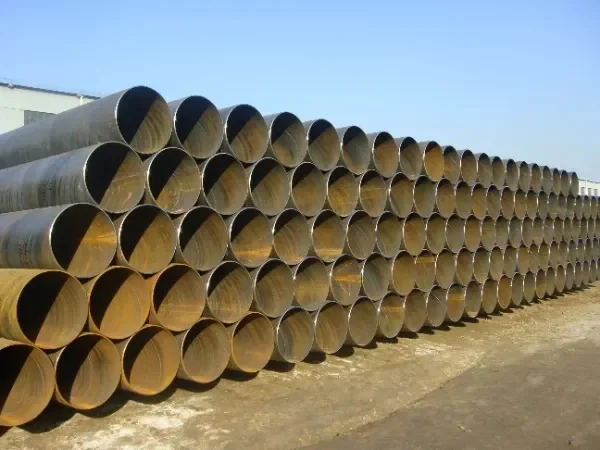Spiral steel pipe is a common pipe, widely used in oil, natural gas, water conservancy, construction, and other fields. In the production process, the welding of spiral steel pipe is a very important link, and the welding technology has an important impact on the quality and service life of the steel pipe. This article will discuss how to weld spiral steel pipes, welding techniques, and common welding defects.
1. How to weld the spiral steel pipe
The welding of spiral steel pipe is mainly divided into two methods: submerged arc welding and double-sided submerged arc welding. Submerged arc welding is a method in which welding wire is heated and melted by an arc to form a weld. Double-sided submerged arc welding is to carry out submerged arc welding on both sides at the same time to make the weld stronger.
Before welding, the spiral steel pipe needs to be pretreated. The first is to clean the steel pipe to remove the oil and oxide on the surface. This is followed by cutting and forming the steel pipe to the required size and shape. Finally, the steel pipe is preheated to reduce thermal stress and deformation during welding.
In the welding process of spiral steel pipe, the following points should also be paid attention to:
(1)The steel plate should be pretreated before welding, including derusting, cutting, flanging, etc. This can ensure the welding quality and the service life of the steel pipe.
(2) When welding, the welding current and voltage should be well controlled to ensure the quality and stability of the weld.
(3)When welding, pay attention to protecting the welding area to avoid oxidation and pollution.
(4) Inspection and trimming should be carried out after welding to ensure the quality and integrity of the weld.

2. Spiral steel pipe welding technology
The welding technology of spiral steel pipe mainly includes three aspects: the welding process, welding equipment, and welding materials.
The welding process refers to the specific operation steps and parameter settings in the welding process. During the welding process, parameters such as welding current, voltage, welding speed, and welding temperature need to be controlled to ensure welding quality.
Welding equipment refers to the equipment and tools used for welding. Commonly used welding equipment includes welding machines, welding guns, welding heads, etc. These devices need to have stable current output and good operating performance to ensure welding quality.
Welding materials refer to materials used for welding, including welding wire, flux, and shielding gas. The selection of welding materials needs to be determined according to the steel pipe material and welding requirements to ensure the welding quality.
3. Common welding defects of spiral steel pipe
During the welding process of spiral steel pipes, common welding defects include weld cracks, pores, slag inclusions, and incomplete penetration. These defects will affect the service life and safety performance of steel pipes, so they need to be discovered and dealt with in time.
Weld cracks are cracks that appear in welds. The main reason is the thermal stress and uneven cooling rate generated during the welding process. Methods to prevent weld cracks include controlling welding temperature, adopting appropriate welding processes and preheating, etc.
Porosity refers to air bubbles that occur in welds. The main reason is that the gas in the welding area cannot be completely excluded during the welding process. Methods to prevent porosity include using suitable welding materials, controlling welding speed and welding temperature, etc.
Slag inclusions are metal slag inclusions that appear in welds. The main reason is that the impurities in the welding area cannot be completely removed during the welding process. Methods to prevent slag inclusion include adopting appropriate welding processes, cleaning the welding area, and using appropriate welding materials, etc.
Lack of penetration is the area of lack of penetration that occurs in a weld. The main reason is that the welding temperature is not high enough or the welding speed is too fast during the welding process. Methods to prevent incomplete penetration include controlling welding temperature and welding speed, adopting appropriate welding processes and welding materials, etc.
To sum up, the welding of spiral steel pipe is a very important link. In the welding process, it is necessary to master appropriate welding techniques and methods to ensure welding quality. At the same time, it is necessary to discover and deal with welding defects in time to ensure the service life and safety performance of steel pipes.
